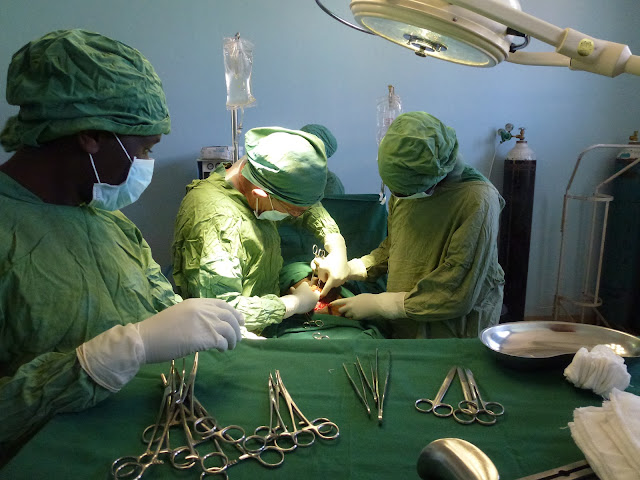 |
| Relief after a difficult birth |
With only a few days to go before
my Shift here in Motta comes to an end Ive been wondering if Ive achieved
anything. I know earlier I said I hadn’t come to try and save the world and
that I would be satisfied if I had been able to help one or two women. But
secretly I was hoping to achieve more, I was hoping to change and improve some
of the way things were done, or not done, and especially I wanted to be able to
leave thinking the changes, however small, would endure, that they were not
happening just because I was doing it, or
were being done just to please me.
When Myrte arrived she also
wanted to see things improve – it was shockingly easy to see where change was
needed – and she, I think with more energy than I had, struggled mightily to
enthuse and to reeducate and to lead the
students and the staff midwives to practice better midwifery, to be more
diligent in history taking, in managing labour, in caring for the mother and
the newborn babies with sensitivity, in maintaining charts and notes, in communicating
with each other, in responding to abnormality and in being responsible.
Today, New years Day 2012 in every
other country in the world, but December 22nd 2011 in Ethiopia, is the
end of my 13th week here, my 91st day of continuous work
at Motta Maternity, and I suspect anyone
who could observe the goings on there would reasonably conclude we had changed
nothing. When we arrived for our Ward Round at 8.30 this morning there were no
midwives in the building, there was only one student waiting , there was a
woman in labour but no notes had been made and her name hadn’t been entered on
the Whiteboard alongside her bed number, patient files were scattered across
the desk in the office and not in the Inbox or the Outbox where they should
have been, there was a filthy bed and mattress still waiting to be cleaned from
yesterday, the blood pressure equipment was missing from the equipment shelf,
and the Bedside Observations charts were not filled in because the Thermometer
was missing. Yesterday we found a needle and a syringe in a wastepaper basket.
There was also a mother with a
premature newborn baby girl who weighed 1.6kg. She was too premature to suck,
her only hope was to be tube fed but
nothing much had happened in the 14 hours since her birth. The mother wanted to
take her home and when it was explained the baby would die, she wasn’t
concerned, and then with a start I realized I wasn’t either. And then I
realized that what had changed over the last thirteen weeks was me!
When I was first confronted with
this situation, a premature baby that needed feeding to survive, I tried hard
to keep the babies alive, and was mostly quite quickly unsuccessful. I soon learned
that premature babies didn’t elicit the same sympathetic responses from
Ethiopian families as they do in the west, and that even when successfully tube
fed, and go home, the odds are stacked against them surviving infancy, not just
because of parental indifference but because of infections that their immature
immune systems could never cope with. They go home to houses made of mud, to
families of kids with snotty noses, fevers, coughs and diarrhea, without water or
sterilizing methods needed to keep their feeding equipment clean( just a cup
and a syringe) , to an environment where the concept of cleanliness and of
disease prevention is unheard of. A
babies only realistic hope of survival is to be breastfed – there is no
alternative – and everyone here, except for me, learned this lesson long ago. Here,
if a baby cant breastfeed, it is doomed.This incidentally is why there is no
such thing here as being unable to breast feed, a frequent “problem” in the
west, where , because it can sometimes be initially difficult, the easy
solution is to say its impossible and give up.
So its me who has changed as I
have come to see the reality of lives on the edge of poverty. These mothers are
not callous and uncaring - I have
seen joy and love and caring every day a baby is born here – but, so unlike me
and my world, they are deeply familiar
with life and death, stillbirth and infant loss, even maternal death, the
struggle to survive, their own history of famine and in the face of all that
the need to be realistic and pragmatic.
They must think people from the
west have no idea. And I think they are right – we have no idea about reality,
about life and death, no idea at all. And I thought I was going to teach them.
I am so glad I came.






